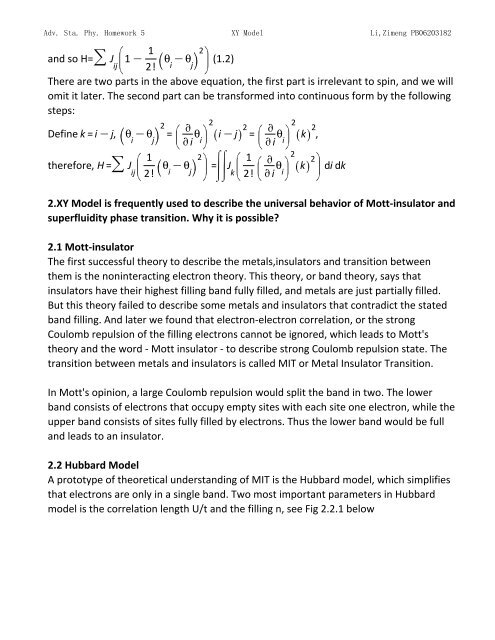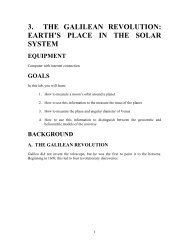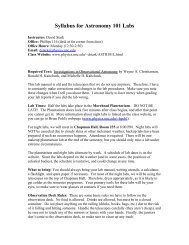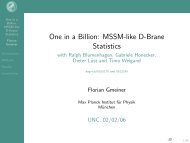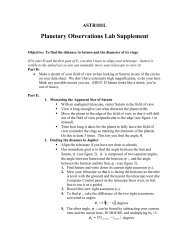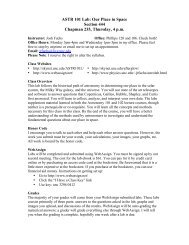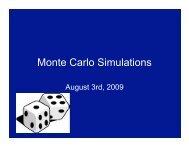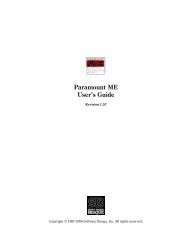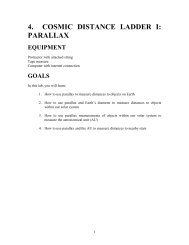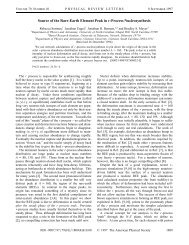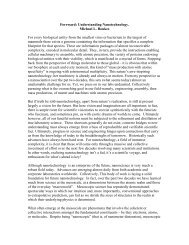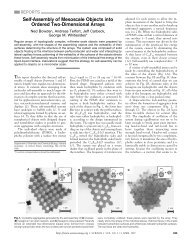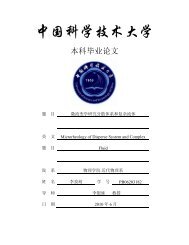Topics in Statistic Mechanics
Topics in Statistic Mechanics
Topics in Statistic Mechanics
Create successful ePaper yourself
Turn your PDF publications into a flip-book with our unique Google optimized e-Paper software.
Adv. Sta. Phy. Homework 5 XY Model Li,Zimeng PB06203182<br />
and so H= (1.2)<br />
There are two parts <strong>in</strong> the above equation, the first part is irrelevant to sp<strong>in</strong>, and we will<br />
omit it later. The second part can be transformed <strong>in</strong>to cont<strong>in</strong>uous form by the follow<strong>in</strong>g<br />
steps:<br />
Def<strong>in</strong>e ,<br />
therefore<br />
2.XY Model is frequently used to describe the universal behavior of Mott-<strong>in</strong>sulator and<br />
superfluidity phase transition. Why it is possible?<br />
2.1 Mott-<strong>in</strong>sulator<br />
The first successful theory to describe the metals,<strong>in</strong>sulators and transition between<br />
them is the non<strong>in</strong>teract<strong>in</strong>g electron theory. This theory, or band theory, says that<br />
<strong>in</strong>sulators have their highest fill<strong>in</strong>g band fully filled, and metals are just partially filled.<br />
But this theory failed to describe some metals and <strong>in</strong>sulators that contradict the stated<br />
band fill<strong>in</strong>g. And later we found that electron-electron correlation, or the strong<br />
Coulomb repulsion of the fill<strong>in</strong>g electrons cannot be ignored, which leads to Mott's<br />
theory and the word - Mott <strong>in</strong>sulator - to describe strong Coulomb repulsion state. The<br />
transition between metals and <strong>in</strong>sulators is called MIT or Metal Insulator Transition.<br />
In Mott's op<strong>in</strong>ion, a large Coulomb repulsion would split the band <strong>in</strong> two. The lower<br />
band consists of electrons that occupy empty sites with each site one electron, while the<br />
upper band consists of sites fully filled by electrons. Thus the lower band would be full<br />
and leads to an <strong>in</strong>sulator.<br />
2.2 Hubbard Model<br />
A prototype of theoretical understand<strong>in</strong>g of MIT is the Hubbard model, which simplifies<br />
that electrons are only <strong>in</strong> a s<strong>in</strong>gle band. Two most important parameters <strong>in</strong> Hubbard<br />
model is the correlation length U/t and the fill<strong>in</strong>g n, see Fig 2.2.1 below


